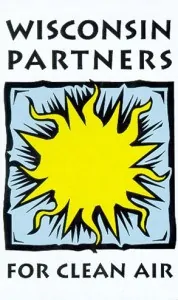

The Technical Bulletin is a synopsis of the NSPS rule supplement and the draft EG rule intended by the EPA to strengthen the previously published rule on July 17, 2014, and earlier proposals. The rules frame the requirements and responsibilities created for Municipal Solid Waste Landfills and the Waste and Recycling Industry.
The EPA has provided a 60-day time period from the publication date of August 27, 2015, for industry responses to the draft rules. Responding is critical to properly frame EPA’s rulemaking process; the EPA may add provisions to the final version of the rule based on information received during the comment period.
The Solid Waste Association of North America (SWANA) and the National Waste and Recycling Association (NW&RA) are reviewing the NSPS and EG rule in detail and will be commenting within the prescribed 60-day window.
This SCS Engineers Technical Bulletin, providing a more detailed summary of the rules, is available on the SCS website by clicking here. Share the link or this blog to help speed the efforts to gather information for the Waste and Recycling Industry response.
Contact Pat Sullivan, SCS Engineers, Senior Vice President to request additional information.
Pat Sullivan, REPA, CPP
National Expert – Landfill Clean Air Act; NSPS
SCS Engineers, Senior Vice President
(916) 361-1297

Today, the WPCA continues to educate Wisconsin businesses and residents on air quality issues and works to effect behavior to improve air quality and reduce harmful air emissions as required by Wisconsin’s state implementation plan under the Federal Clean Air Act.
SCS Engineers is proud to be a member of this influential organization.
EPA Final Rules for Disposal of Coal Combustion Residuals from Electric Utilities
SCS updated information describing the rules regulating CCR from electric utilities. This bulletin includes compliance details about location, design, operation, closure and post-closure care requirements to avoid a facility considered as an “open dump” subject to citizens’ suit enforcement under RCRA.
by Mike McLaughlin, P.E.

Coal combustion residuals (CCR) are one of the nation’s largest industrial waste streams, with more than 100 million tons produced annually. Roughly 40 percent of CCR produced is used beneficially, with the remainder disposed in landfills and surface impoundments.
Public and private waste management facilities will have new customers, as utilities that formerly operated their own disposal facilities seek reliable offsite disposal capacity. The cost of managing CCR is going up—EPA estimates the annual costs of its new CCR standards will be between $500 million and $750 million. Other estimates are as high as $2 billion.
However, before accepting CCR materials, MSWLFs should make sure they have modified procedures and otherwise accounted for the unique characteristics of CCR. CCR can have high sulfur content (on the order of 10,000 to 40,000 ppm), and under the right circumstances sulfur compounds can form hydrogen sulfide if CCR is mixed with MSW. To the extent high-sulfur wastes are disposed under conditions that can produce hydrogen sulfide, those conditions should either be controlled (or avoided), or appropriate precautions taken to manage the resulting hydrogen sulfide gas in gas collection and other systems.
There could be other reasons for segregating CCR. For example, placing CCR in a monofill areas might increase the potential for later beneficial use, especially if the materials can be kept dry. Moisture content is a critical factor affecting CCR use in pozzolanic cements, but not all ash materials are suitable for pozzolanic cement in any case. CCR also can affect structural stability of fill mass, operation of gas and leachate collection systems (e.g., through clogging with fines), and dust generation.
Read the entire Technical Bulletin by clicking here.